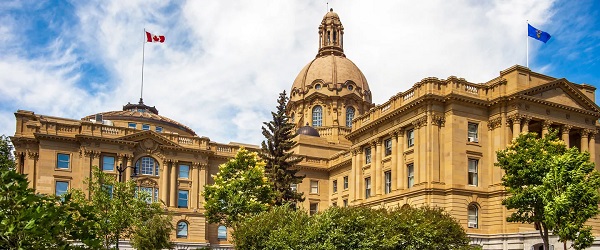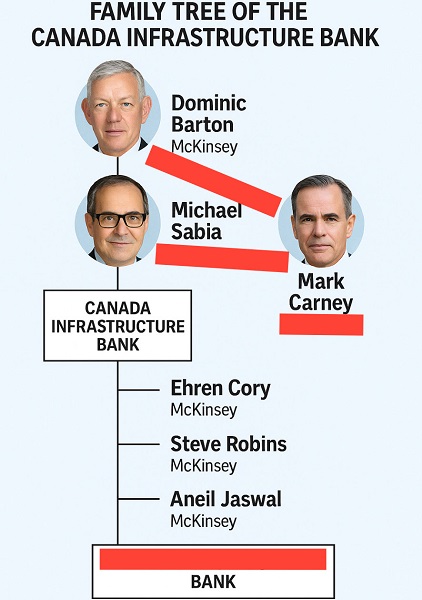Frontier Centre for Public Policy
Carney Risks Repeating Trudeau’s Immigration Failures

From the Frontier Centre for Public Policy
Canada is not and never has been anti-immigrant. Immigration built this country, and it will continue to do so. But immigration policy must serve the national interest, not overwhelm it.
Canadians want Carney to abandon Trudeau’s failed immigration model and set immigration at a pace Canada can sustain
Canada is buckling under the weight of unsustainable immigration levels, and Prime Minister Marc Carney’s early decisions suggest he plans to keep following Justin Trudeau’s failed path.
Carney’s recent plan to bring in thousands of elderly retirees from India raises an obvious question. No disrespect is intended toward India or those retirees, but Canadians are asking how this serves their interests. Our hospitals are overcrowded, our housing market is out of reach for young families, and our social services are under immense strain. Adding more retirees will increase the pressure on already strained systems.
Many had hoped Carney would pivot from Trudeau’s disastrous policies. Instead, he appears set to double down.
Under Trudeau, housing construction lagged badly, with only about 200,000 homes built each year while the population grew by nearly a million. When nearly a million newcomers arrive each year but only 200,000 homes are built, the math simply doesn’t work.
The result was skyrocketing rents, collapsing affordability, and young Canadians watching the dream of home ownership slip away. Health care, education and other public services were swamped. The crisis Carney has inherited is severe; his early moves suggest he may only deepen it.
Conservative Leader Pierre Poilievre has given voice to what most Canadians already believe: the pace of immigration must be slowed. As he put it, “We need to ensure that more leave than come in over the next couple of years, while we catch up, while housing, health care and jobs can catch up.” That is not radical. It is common sense.
Canada is not and never has been anti-immigrant. Immigration built this country, and it will continue to do so. But immigration policy must serve the national interest, not overwhelm it.
For nearly 150 years, Canada followed a clear consensus: newcomers were welcomed in sustainable numbers, chosen for their ability to contribute, and integrated into Canadian life. That model admitted fewer people overall, prioritized skilled workers, and required language ability and proof of economic contribution. It made Canada one of the most successful immigrant societies in the world.
Trudeau shattered that consensus. In 2017, seeking to posture against Donald Trump, he tweeted that Canada welcomed anyone, anywhere, no questions asked.
They came, many through unofficial crossings such as Roxham Road, a small rural road south of Montreal that became the country’s busiest irregular entry point.
The Safe Third Country Agreement requires refugees to claim asylum in the first safe country they enter, but it applied only at official crossings, not irregular ones like Roxham Road. As a result, Canada was required to process all asylum claims made there.
Others arrived as “students” or “temporary workers,” often with limited verification of their claims. Tens of thousands entered outside the regular application process, ahead of applicants waiting abroad who had spent years preparing careful applications.
The costs are now undeniable. Services are collapsing under the strain. Housing affordability is at historic lows. Social cohesion is fraying, with growing frustration spilling onto social media.
Canadians who question policy are often dismissed as “far right,” stifling legitimate debate and ignoring the very real damage being done to their quality of life.
Carney now faces a clear choice. He can continue Trudeau’s reckless course, or he can restore the balanced immigration system that served Canada so well for generations.
He does not need to reinvent the wheel. The pre-2015 model showed that a nation can welcome newcomers generously while protecting its own social fabric. That model worked because it respected limits. A country must control its borders, carefully vet entrants, and admit only as many as it can realistically absorb.
The lesson is simple: numbers matter. Without a return to sustainable immigration levels, Canada’s health care, housing and education systems will continue to buckle, and the trust of Canadians in their leaders will erode further.
The longer we delay, the harder it will be to repair the damage. Young families already priced out of the housing market cannot wait another decade for relief. Hospitals already running at capacity cannot handle more unchecked demand.
Carney talks about being willing to pivot. Immigration is where he must prove it. Canadians are not asking for closed doors. They are asking for control, balance and common sense.
If he delivers, Canada can remain a country that welcomes newcomers while protecting the services and opportunities that make this nation attractive in the first place.
If Carney fails, the Canada we pass to our children won’t be the country we once knew.
Brian Giesbrecht is a retired judge and a senior fellow at the Frontier Centre for Public Policy.
Alberta
Ottawa’s Firearms Buyback Plan: Federal Government Puts Provincial Authority In Its Sights

From the Frontier Centre for Public Policy
It’s about politics and provinces are right to refuse to play along
Federal Public Safety Minister Gary Anandasangaree’s leaked admission that Ottawa’s firearms buyback is unenforceable was no slip. It exposed the way federal power is deployed for partisan gain while provinces are left to pay the bill.
The leak matters because it exposes a pattern, not an exception. Ottawa drafts policies to suit its politics and expects provinces to carry the weight. Police budgets, university research chairs, hospital systems and housing markets are treated as levers to be pulled from Ottawa. The effects are felt locally, but the decisions are made elsewhere.
Consider the pattern. The Online Harms Act, rejected more than once, is introduced yet again, as if repetition can substitute for consent. Health care dollars are tied to federal strings that reorder provincial systems with no regard for local capacity. Immigration quotas climb at a pace provinces cannot house or school. Environmental rules descend without negotiation, upending years of co-operative planning. Each measure arrives as an edict. Consultation is reduced to announcement.
Resistance has already begun. Saskatchewan moved early, adopting legislation that makes any federal confiscation program subject to provincial authority, including RCMP operations. In Alberta, Premier Danielle Smith has gone further, declaring flatly: “We will not allow police in Alberta to confiscate previously legal firearms. I have directed two of my ministers to relentlessly defend Albertans’ right to lawful and safe possession of firearms and the right to self-defence.”
Even before the introduction of the Sovereignty Act, Tyler Shandro, then Alberta’s justice minister, announced that the province would not use its police or prosecutors to carry out confiscations. Although former premier Jason Kenney opposed a Sovereignty Act, his government likewise refused to act as Ottawa’s enforcer.
Alberta and Saskatchewan have since given themselves legislative tools, Sovereignty Acts, which assert the right of provinces to decline enforcement of federal laws they judge unconstitutional. These statutes formalize existing constitutional powers. Provinces without Sovereignty Acts have also drawn lines. Ontario has signalled its refusal to help enforce Ottawa’s firearms program.
These positions are lawful, rooted in the Constitution’s division of powers, which assigns the administration of justice and policing to the provinces.
This clarity ought to attract others. Manitoba, with one of the highest proportions of licensed hunters in the country, has strong reason to resist Ottawa’s targeting of lawful gun owners. Communities are not made safer by seizing deer rifles from responsible hunters, nor are public services improved by diverting scarce provincial resources into a program that federal ministers concede will not work. Manitoba would do well to follow Alberta and Saskatchewan in defending its jurisdiction, whether through a Sovereignty Act or by refusing to play Ottawa’s game.
The point is practical. Prairie provinces cannot spare rural detachments to seize hunters’ rifles because the Liberal caucus fears losing seats in Montreal. They cannot put their power grids at risk to meet Ottawa’s timelines while households absorb higher bills. Universities cannot be turned into federal policy pilot projects. Provinces exist to govern their own communities, not to absorb the fallout of federal experiments.
The genius of federalism lies in the division of authority, which encourages compromise and minimizes tyrannical imposition. Ottawa governs in its sphere, provinces in theirs. Where the two overlap, cooperation must be negotiated, not imposed. Sovereignty Acts sharpen that principle. They remind Ottawa that partnership is earned, not dictated.
What Anandasangaree’s admission exposed was not only the cynicism of one firearms program. It revealed a method of governing: federal power deployed for partisan gain, with provinces reduced to instruments. That cannot endure. Canada was never meant to be a chain of command. It was built as a contract—one that requires respect for provincial authority.
Provinces that refuse to carry out Ottawa’s politically motivated projects are not weakening Canada; they are enforcing its terms.
Marco Navarro-Genie is vice-president of research at the Frontier Centre for Public Policy and co-author, with Barry Cooper, of Canada’s COVID: The Story of a Pandemic Moral Panic (2023).
Censorship Industrial Complex
When Did Traditional Values Become Hate Speech?
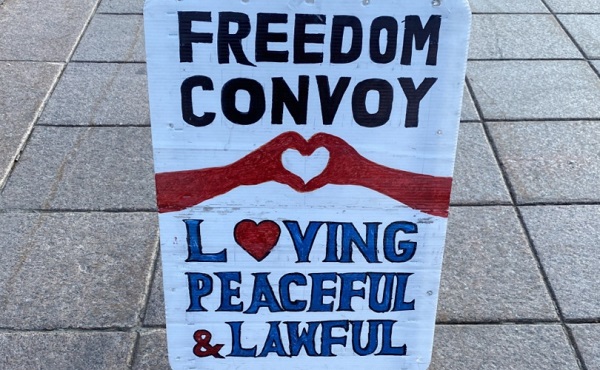
From the Frontier Centre for Public Policy
By Lee Harding
This smear campaign misrepresents peaceful dissent as dangerous radicalism, ultimately undermining trust in institutions and eroding civil debate. Ordinary Canadians are being branded as extremists for holding traditional values.
A disturbing trend has taken hold in Canada and across the Western world, where freedom-lovers and conservatives are categorized as extremists and potential terrorists.
Another headline-grabbing example took place on July 8 when RCMP spokeswoman Staff Sgt. Camille Habel told a CBC interviewer about an alleged militia plot to seize land in Quebec. She said if someone “believed in equal gender rights” but suddenly leaned towards “traditional values … that might be a sign that they’re becoming more extremist.”
Alas, some prominent people have gone so far left that traditional values are “far right” to them. Consider a 2021 report by the House of Commons Standing Committee on Public Safety and National Security. The document said “Ideologically motivated violent extremism [IMVE]… represents a societal issue requiring a whole-of-government approach.”
The document warned that since the pandemic, “IMVE activity has been fueled by an increase in extreme anti- authority and anti-government rhetoric often rooted in the weaponization of conspiracy theories. IMVE influencers promote misinformation and action, including violence.”
The report complained that some witnesses to the committee did not embrace the IMVE term, and instead used phrases such as the “far right” or the “far-right ecosystem.” Here, conservatives, conspiracy theorists and potential terrorists are one big, bad blog.
The tactic is old. In 1943, a Communist directive to American activists advised, “When certain obstructionists become too irritating, label them after suitable buildups as fascist or Nazi or anti-semitic, and use the prestige of anti-fascist and tolerance organizations to discredit them. In the public mind, we constantly associate those who oppose us with those names which already have a bad smell. The association will, after enough repetition, become fact in the public mind.”
This misrepresentation worked well against the Freedom Convoy. One mysterious person with a Nazi flag was enough to dismiss thousands of people as dangerous fascists. But spurious judgments like these malign many good people. This leads to misguided opposition against people who want to uphold Canada, not tear it down.
Trans-activists have their own form of name-shaming. They call out TERFs, meaning trans-exclusive radical feminists. These so-called TERFs believe that biological males have no place in women’s shelters, prisons and sports. This kind of disparagement is all too common. In September 2023, Canadian labour leaders and at least one researcher from a major university joined in a Zoom call to strategize against the 1 Million March 4 Children, a nationwide protest against transgender ideology in schools. A leaked video of the Zoom call showed these leaders and activists using terms like “fascist,” “intolerance,” “hate group,” “transphobic” and “homophobic” against parents and other citizens who wanted ideological concepts on gender kept out of school.
Meanwhile, the Canadian Anti-Hate Network (CAHN) blacklisted Campaign Coalition for Life as a “hate movement” after receiving $640,000 from the federal government to compile a list of allegedly hateful organizations and people.
“We define ‘hate-promoting’ to refer to ideologies, groups, movements and individuals which target members of protected groups,” explained the CAHN booklet entitled 40 Ways to Fight the Far-Right; CAHN even hosts a one-hour workshop that lays out “the intersection between hate, the far right, and conspiracy theories.”
This mirrors the United States where the left-leaning Southern Poverty Law Centre (SPLC) first made a list of bad organizations in 1990. Since 2000, the organization has compiled a “hate map” of these groups, which now number 835. As one example, SPLC calls the Family Research Council an “extremist” “hate group” due to their pro-life, pro-traditional marriage stances.
During Barack Obama’s second term as president, the Department of Defense (DoD) incorporated SPLC assessments into its training on domestic terrorism, leading to undue smears. In 2013, a DoD training presentation at Fort Hood, Texas, listed “Evangelical Christianity,” “Catholicism” and “Tea Party” as fostering extremism. In 2014, soldiers at Fort Bragg in North Carolina were told similar things about pro-gun and pro-life organizations.
In 2015, watchdog organization Judicial Watch openly called on the DoD to stop relying on the “anti-Christian” SPLC for its definitions, saying the group itself was hateful.
A teaching module presented to 9,100 soldiers at Fort Liberty through 2024 labelled National Right to Life and Operation Rescue as potential terrorist threats. Congressional Republicans protested this politicization of military training. In response, an army spokesperson echoed disclaimers made 10 years ago, saying the slides were not policy and were improperly vetted.
In July 2025, Army Secretary Dan Driscoll called it a “grievous error” to equate conservative groups with terrorists and vowed it would never happen again. Unfortunately, Canadians have no such assurances.
Lee Harding is a research fellow with the Frontier Centre for Public Policy.
-
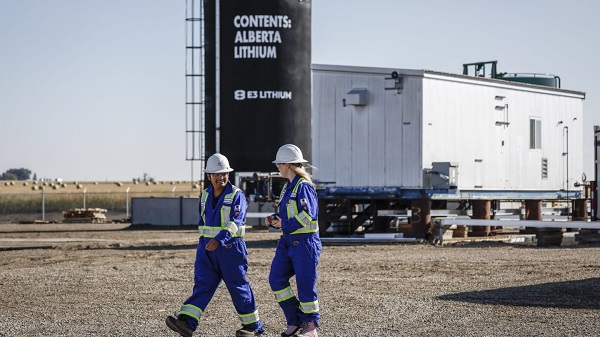
 Alberta2 days ago
Alberta2 days agoAlberta’s E3 Lithium delivers first battery-grade lithium carbonate
-
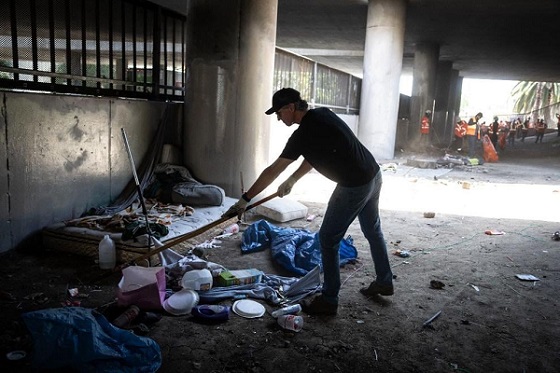
 Business2 days ago
Business2 days agoLA skyscrapers for homeless could cost federal taxpayers over $1 billion
-

 Artificial Intelligence2 days ago
Artificial Intelligence2 days agoAI chatbots a child safety risk, parental groups report
-

 Censorship Industrial Complex2 days ago
Censorship Industrial Complex2 days agoHurting someone’s feelings could be punishable under Canadian hate crime bill: legal expert
-

 Energy2 days ago
Energy2 days agoNuclear power outperforms renewables every time
-
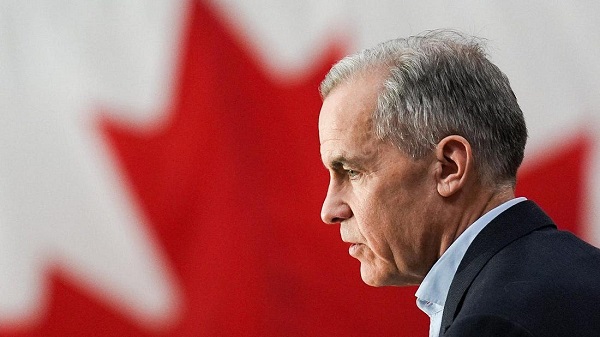
 Automotive2 days ago
Automotive2 days agoCanada’s EV subsidies are wracking up billions in losses for taxpayers, and not just in the auto industry
-
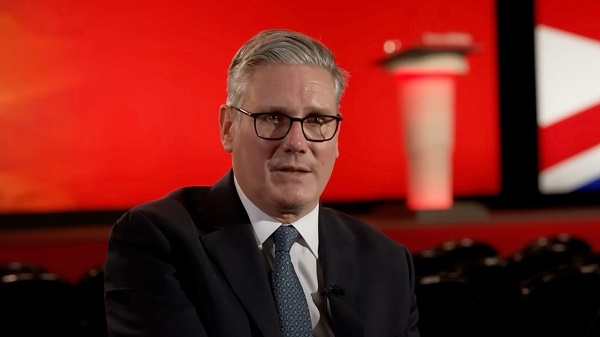
 Business1 day ago
Business1 day agoUK Government Dismisses Public Outcry, Pushes Ahead with Controversial Digital ID Plan
-

 Crime1 day ago
Crime1 day agoThe “Strong Borders Act,” Misses the Mark — Only Deep Legal Reforms Will Confront Canada’s Fentanyl Networks



